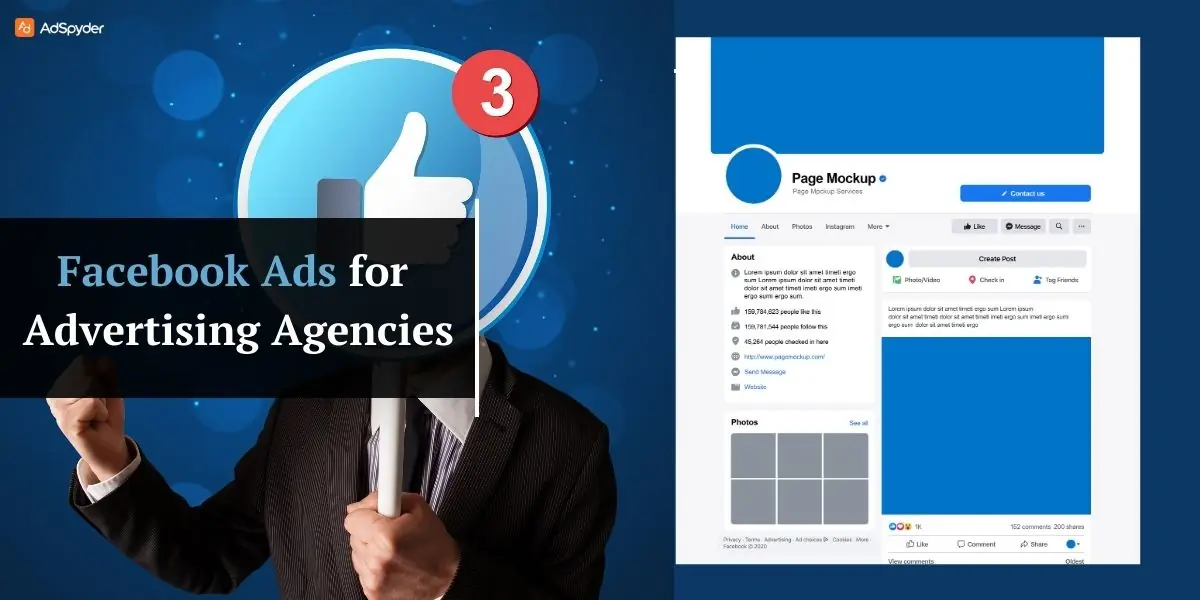Affiliate marketing is a performance-based marketing strategy where affiliates earn commissions by promoting brands’ products and services through various means, it can using social media, coupon sites, blogging websites, and other digital marketing platforms. While email marketing remains one of the most effective channels for driving conversions. Why? Because it allows for personalised, direct communication with subscribers who have shown interest in what you have to offer. However, not all email marketing strategies work for all brands in affiliate marketing. Effective email campaigns can help you build relationships, provide value, and drive conversions without overwhelming the audience. In this blog, we will look into different aspects of Email Marketing for Affiliates, best practices, and things to avoid while promoting through email marketing:
Ready to Elevate your Marketing Strategy?
Why Email Marketing Is Crucial for Affiliate Marketers
Email marketing, if done correctly, can prove to be one of the best ways of getting higher returns on investment, as you can personalize this and there is less cost compared to any other way for affiliate marketers. Here are some reasons why it’s such a powerful tool:
High Conversion Rates
Email marketing consistently delivers high conversion rates compared to other channels. Unlike social media, where algorithms control how many people see your posts, email marketing gives affiliates direct access to their audience. Subscribers have already opted in to receive your messages, showing that they are genuinely interested in the products or content you share. This makes them more likely to convert when you promote affiliate offers.
Direct Communication with Your Audience
Email allows for direct communication with your subscribers, free from the noise and competition that is present on social media or blogs. You’re reaching an audience that has given explicit consent to hear from you, which builds a foundation of trust. Additionally, email offers personalization options, helping you tailor messages to specific audience segments, which increases engagement.
Lead Nurturing Over Time
Not every subscriber is ready to make a purchase when they first subscribe. Email marketing allows you to engage leads by providing valuable content over time. Through well-planned email content, affiliates can build relationships, educate their audience about the products they are promoting, and gradually compel users to make a purchase.
Enhanced Tracking and Optimization
As we all know, it’s important to track the success of the email campaign; affiliates also track essential metrics like open rates, click-through rates, and conversions. These insights allow affiliates to continuously optimize their campaigns to see what works best, making it easier to tweak their strategies for higher engagement and better results.
Related – Creating Successful Drip Email Campaigns
Building an Effective Email List
A successful email marketing requires a quality email list, which is also crucial for affiliate marketers who want to start digital marketing through email. A huge email list will never give good outcomes; instead, focus on building a targeted email list of subscribers who are genuinely interested in your brand’s products. Let’s take you through how you can achieve these quality leads:
Using Lead Magnets
One of the best ways to attract subscribers is by offering lead magnets—free resources in exchange for email addresses. These could be eBooks, checklists, templates, or exclusive content related to your niche. While you promote this, ensure that it aligns well with your affiliate offers to attract the potential audience. For example, if you’re promoting fitness products, offering a free workout guide could be an ideal lead magnet.
Compliance with Data Protection Laws
When building your email list, make sure you abide by the data protection laws like GDPR (General Data Protection Regulation) and CAN-SPAM (Controlling the Assault of Non-Solicited Pornography and Marketing Act). These laws are made for business owners or any organization that wants to promote marketing through email should take explicit consent from subscribers before sending them marketing emails. They also mandate that every email contains an easy-to-find unsubscribe option. Failing to comply can lead to penalties, as well as damage your reputation.
Avoid Purchasing Email Lists
Many affiliates think buying data would help them start quickly with digital marketing, but it is the worst idea to go for. Purchased lists usually consist of unqualified leads, people who haven’t consented to receive emails from you. Not only can this lead to low engagement rates, but it also risks your emails being marked as spam, which can damage your deliverability rates and credibility.
3. Crafting Affiliate-Friendly Email Content
Once you’ve built a quality email list, the next challenge is to craft unique and attractive email content that resonates with your audience and grabs their attention. Consider these suggestions when starting with affiliate email marketing:
Balancing Affiliate Links and Value
Finding the right balance in affiliate email marketing is crucial. Overloading subscribers with affiliate links can lead to unsubscribes, so it’s important to provide valuable content. Focus on delivering educational, entertaining, or informative material while subtly integrating your affiliate products. For example, when promoting a tech product, create emails that address common challenges and then, as a solution, add a few lines along with an affiliate link.
Trust-Building Through Valuable Content
When crafting emails, prioritize building trust with your audience. Instead of focusing solely on sales, think of email marketing as an opportunity to establish authority in your niche. Craft content that gives knowledgeable insights about the niche and its highlights. If subscribers view you as a trustworthy source, the chances of opening affiliate links will increase, and then encouraging them to make a purchase would be much easier.
Email Templates and Examples for Affiliates
To ease crafting emails nowadays, there are certain email templates present in the market that work particularly well for affiliates. For example:
- Newsletter Format: A weekly or monthly newsletter that offers a mix of valuable content regarding the product and its affiliate recommendations.
- Product Review Email: A detailed email featuring an honest review of a product you’re promoting, highlighting its pros and cons along with a sample video.
- Exclusive Offers: An email highlighting limited-time discounts or special deals for products you’re affiliated with.
Mix and match these options to enhance your email content and make it fresher, engaging and at the same time ensuring that subscribers are not overwhelmed, are interested in the offers.
Personalization and Segmentation
Segmentation is key to improving your email performance as it gives you categories that you can target according to your requirements. Making groups of email lists based on their interest, purchase history, age, or engagement levels, and sending them tailored content accordingly. Personalizing emails by using the recipient’s name or offering recommendations based on their preferences makes the email experience feel more relevant, increasing the likelihood of conversions.
Best Practices for Affiliate Email Campaigns
The success of your affiliate email marketing also depends on adopting best practices that align well with your audience’s preferences. Here you can find the best practices to follow and consider implementing them for enhanced results:
Timing and Frequency
Experiment by sending emails at different time intervals, like morning, evening and find out which time suits better with your audience better. As important as the time, frequency also plays an essential role. Sending too many emails will overwhelm your recipients, leading to a higher unsubscribe rate, while sending too few can cause your audience to lose interest in your content.
A/B Testing for Optimization
A/B testing is the most widely used way of experimenting with different elements of your email campaigns to see what resonates most with your audience. These elements include subject lines, email body, call to actions, etc. You can test different subject lines like “Exclusive Offer”, “Get Ready to Unlock” CTAs, for example “, subscribe”, “Plan your success” or even the time of day emails are sent. Through continuous testing, you can identify what drives the highest engagement and optimize future emails accordingly.
Tracking Key Metrics
Tracking and analysing key metrics is essential for understanding and optimizing the performance of your affiliate campaigns. The essential metrics that you must consider are given below:
- Open Rate: It tells you about the percentage of people who have opened your email just by looking at the subject line, and so it indicates your subject line is effective.
- Click-Through Rate (CTR): Through Rate: It is the way you can understand if the recipients find your content interesting and the percentage of recipients clicking on the links provided within your email.
- Conversion Rate: The percentage of subscribers who complete a desired action, such as purchasing through your affiliate link.
- Bounce Rate: Sometimes, due to some mismatching or issues, or if the email is not working, the emails do not get delivered. So the percentage of emails that couldn’t be delivered is called as Bounce rate.
Tracking these essential metrics helps you identify patterns and then change, optimize your strategy to improve performance.
Using Automation for Lead Nurturing
Email automation tools can significantly boost your efficiency by automatically sending follow-up emails based on user behavior. For example, if someone has subscribed and clicks on the links within your email but does not make any purchase, then you can set up an automated email sequence to send them exclusive offers and encourage conversions. Automated sequences are powerful for nurturing leads over time, especially when promoting higher-ticket affiliate products.
Common Mistakes to Avoid in Email Marketing for Affiliates
While email marketing can be used as one of the most beneficial tools for affiliates, it’s also easy to make mistakes that can lead to reduced engagement, more unsubscribes, or even getting flagged as spam. Consider these most common mistakes that you should avoid to run a successful Affiliate email marketing:
Overloading Emails with Affiliate Links
One of the most common mistakes that affiliates make is cramming their emails with too many affiliate links to get more purchases. While your goal is to promote products, overloading your emails with links can make you seem too sales-driven, reducing trust and making subscribers feel like they’re being bombarded with promotions that they are not genuinely interested in.
Solution: As we all know how valuable contents are given more priority and helps build trust for the long term. So, focus on delivering value and trust-building content first. Use affiliate links sparingly and strategically, placing them where they naturally fit into the context of the email.
Neglecting List Segmentation and Personalization
If you send the same brand promotional emails to the entire list without considering their interests or behaviors, then there is a high chance of getting poor outcomes. As different subscribers have signed up for different interests, like if someone who has subscribed for fitness tips but is receiving emails promoting tech gadgets.
Solution: Segment your list based on factors like users’ past purchases, interests, and what emails they signed up for. Use personalization techniques, such as including the subscriber’s name and sending tailored content, to create a more relevant experience.
Ignoring Legal Requirements (Spam Laws)
Compliance with email marketing laws such as GDPR (in Europe) and CAN-SPAM (in the United States) is crucial for maintaining your reputation and avoiding any legal violations. Some common compliance regulations include failing to keep a clear unsubscribe link, not having explicit consent to send emails, or using deceptive subject lines that convey something else.
Solution: Make sure that every email you send includes a visible opt-out button or unsubscribe option. Only send emails to individuals who have opted in, and be transparent about the message you intend to communicate. Avoid using misleading subject lines or making promises you cannot fulfill.
Check Out Email Marketing for Lead Generation
Not Testing Emails Before Sending
Test emails before sending them to recipients, as there can be chances of errors, such a links not opening at the correct Landing page, images that don’t load, formatting issues, like it looks fine at your end, but when sent, it changes. These mistakes can affect the subscriber’s experience and reduce the effectiveness of your campaigns.
Solution: Check and test your emails before the final call to send them. Use tools that allow you to preview your email across different devices like desktop, mobile, tablet, as well as on different email services like Gmail, Outlook, etc. Send test emails to yourself or a small group to catch any potential issues.
Sending Irrelevant Offers
Sending irrelevant offers or offers that are of no interest to subscribers can erode the trust you’ve built with them. If the recipient has subscribed for health-related emails, tips, and you are sending them gadget promotions, this could lead to unsubscribes or complaints.
Solution: Stick to affiliate offers that align with your niche and the interests of your subscribers. If you want to promote a broader range of products, make sure they are still relevant to your audience’s needs and preferences.
Tools and Platforms for Email Marketing for Affiliates
Choosing the right tools can help you streamline and automate your email marketing efforts, personalize content, and track performance. To give you a rough idea, let’s see some of the best email marketing platforms and tools for affiliate marketers:
Mailchimp
Mailchimp is a popular email marketing platform option one can explore, as it offers a user-friendly interface and a wide range of automation features. It’s particularly useful for affiliates because it provides tools for audience segmentation, A/B testing, experimenting, as well as tracking key metrics to check the performance of the campaign. Mailchimp’s free plan also makes it an excellent choice for beginners who just want to get a sneak peek into affiliate marketing and want a pocket-friendly option.
Key Features:
- Drag and drop editor, which makes it easy for users to use.
- Comprehensive automation tools for email sequences.
- Advanced audience segmentation for targeted campaigns.
- Detailed analytics on email performance.
ActiveCampaign
ActiveCampaign is a powerful platform that combines email marketing with Customer Relationship Management features. This feature makes it ideal for affiliates who are looking to build long-term relationships with their subscribers. It also has an automation feature, and the best part is that it allows you to create complex workflows for lead engagement and conversions. Making it the most feasible tool.
Key Features:
- Advanced automation capabilities for email sequences.
- CRM integration for tracking customer behavior and giving insightful information.
- A/B testing and split testing for scaling..
- Reporting and analytics for easy understanding and optimization.
GetResponse
GetResponse offers a variety of features for affiliates, including email automation similar to other options, landing page creation, and webinar hosting. It’s ideal for affiliates who want an all-in-one solution for their marketing efforts.
Key Features:
- Landing page builder for capturing email leads based on the LP.
- Webinar hosting for live or automated product demos.
- Automation workflows for nurturing leads in the long term.
- Detailed email performance tracking with key metrics.
ConvertKit
If your goal is content-driven marketing, you are a creator or blogger and want to dive into affiliate marketing, then ConvertKit is one of the best options to start with. Its simple interface is perfect for those who are new to email marketing and are not aware of much of the workings of email marketing, and it offers automation and segmentation tools to make it easier for users to categorise their audience and target them by making personalised content.
Key Features:
- An easy-to-use and simple interface is beneficial for new users.
- Visual automation builder for setting up email sequences.
- You can tag and segment your audience-targeted campaigns.
- Add valuable content to enhance your email marketing strategies and outcomes.
Recommended For You – Email Marketing for Real Estate
AWeber
AWeber is a tried-and-true platform for affiliate email marketing. It offers a comprehensive set of features for managing your email campaigns, including analytics and integrations with popular affiliate networks in the market. It is also pocket-friendly.
Key Features:
- Easy-to-use autoresponder tools.
- Pre-built email templates for quick deployment and testing.
- Built-in analytics tracker for performance analysis.
- Integration with popular platforms like WordPress and Shopify, which are used for website blog posting and structured organization.
Case Studies for Email Marketing for Affiliates
To take you through valuable insights on how successful affiliates have leveraged email marketing to drive conversions and revenue, here are a few wonderful examples:
Fitness Influencer Affiliate Campaign
Influencer: Jeff Nippard, a fitness YouTuber and influencer, partnered with Bulk Powders, a well-known supplement company that comes in the health and fitness category. Instead of sending direct promotional emails, Jeff crafted an email series focused on the science of protein intake and its role in muscle growth, providing value through educational content.
The final email of Jeff Nippard offered his subscribers an exclusive discount code for Bulk Powders’ protein supplements. This campaign resulted in a 28% increase in affiliate sales. By focusing on education first, Jeff was able to build trust, leading to higher conversions.
Tech Blogger Affiliate Campaign
Blogger: Marques Brownlee (MKBHD), a tech reviewer, collaborated with Amazon Affiliates to promote smartphones and gadgets. He segmented his list into categories like smartphones, laptops, and accessories. Marques sent personalized emails with product reviews and comparisons (e.g., comparing the iPhone 15 to the Google Pixel 8).
Through personalized recommendations, MKBHD achieved a 35% click-through rate, driving significant commissions during a high-traffic period like Black Friday sales.
E-Commerce Affiliate Campaign
Affiliate: Kristy, a fashion influencer, partnered with Nordstrom to promote their summer collection. Instead of immediately promoting products, she sent emails focused on summer styling tips, seasonal trends, and must-have accessories in your wardrobe.
After the continuously engaging and encouraging phase, Kristy introduced a time-sensitive discount for select Nordstrom items. Her thoughtful, value-driven approach led to a 22% increase in sales during the summer sale period and reduced unsubscribe rates.
FAQs
What is the key to effective email marketing for affiliates?
It’s important to focus on delivering valuable and knowledgeable content. This way, you can build their trust, resulting in purchases.
How often should one send emails as an affiliate marketer?
Sending emails on regular intervals but not overwhelming your audience with emails can lead to good engagement. Make sure to send one or two emails per week and then optimize them according to audience responses.
What’s the best way to promote several products in one email?
The best way to promote multiple products in an email is to be interactive and relevant with the audience, but do not overload your content with too many affiliate links. As it will give an impression of a sales-driven email, the audience might unsubscribe or ignore it.
What are the best email marketing tools for affiliates?
Mailchimp, ActiveCampaign, ConvertKit, and GetResponse, etc. These tools are automated, provide CRM for analysis and optimization of performance.
How do I avoid being flagged as spam in affiliate emails?
Start by segmenting your email list so you’re reaching the right audience with the right message. Keep your subject lines honest and clear—avoid anything that feels like a clickbait trap. Always include an easy-to-find unsubscribe link. Only send emails to those who have willingly signed up.
Is segmentation important when it comes to email marketing?
Yes, segmentation is essential when it comes to email marketing. It allows you to categorise people based on their interests and behaviour.
What’s the best way to track affiliate email performance?
There are various tools available in the market having built-in analytics to monitor key metrics. Track open rates, click-through rates, and conversions.
See It Here – Email Marketing for Events
Conclusion for Email Marketing for Affiliates
Email marketing remains one of the most effective tools for affiliates to drive conversions. It can build long-lasting relationships with better ROI. Focus on growing a high-quality email list, crafting value-driven content, and avoiding some of the common pitfalls. Digital marketing professionals can maximize the impact of their email campaigns. To get enhanced results, continuously optimize and test your strategies. This is to understand what works best for your audience.
Compare and then use tools and a strategic approach to make your email marketing a powerful asset. Boost your affiliate marketing efforts, driving consistent results and growing your affiliate income over time.




